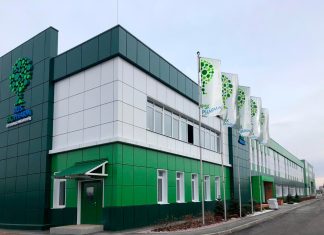Academician N. P. Bochkov Research Centre for Medical Genetics (MGRC), with the support of Roche, will launch a domestic test system that identifies spinal muscular atrophy (SMA) in newborns, Roche’s press service reported.
The work on the creation of this test system is in its final stage, and it will be provided for use as part of an expanded national neonatal screening. Sergey Kutsev, chief consultant geneticist of the Ministry of Health of the Russian Federation, stated that during a press conference in Moscow.
“Spinal muscular atrophy is one of the most common rare diseases. The largest number of children with SMA have type I disease, and in 90% of cases, it soon leads to a fatal outcome. At the same time, an effective treatment for spinal muscular atrophy exists. It is extremely important to prescribe it before the first symptoms appear: these may become noticeable at the age of 2 to 3 months. It has already been proven that the prescription of pathogenetic therapy at the preclinical stage gives the children the opportunity to develop normally. Today there are several SMA early detection screening test systems in the world. The test system being developed at the Academician N. P. Bochkov Research Centre for Medical Genetics is already demonstrating its effectiveness,” Sergey Kutsev, MGRC’s Director, said.
The domestic test system, the prototype of which was developed by MGRC’s DNA diagnostics laboratory, does not impose strict requirements on the quality of sample preparation: the test is performed on dried blood spots. This material is obtained as part of neonatal screening. Blood samples from newborns are taken with a heel stick blood tests system, with a special filter. In this form, the sample is delivered to a laboratory, where it is analyzed for the most common hereditary diseases.
“Our test system is qualitative, not quantitative: it detects changes in the structure of the SMN1 gene. The test itself is a PCR with the subsequent analysis of the melting curve. This made it possible to make the technique available for use in any laboratories that perform tests within the framework of large-scale neonatal screening. We have tested the effectiveness of this test system on more than 2,000 samples, most of which result from population sampling. SMN1 gene deletion was detected corresctly even in the most difficult cases,” said Alexander Polyakov, head of the DNA diagnostics laboratory at MGRC.
According to Ekaterina Fadeeva, head of the Department for Medical and Scientific Cooperation at Roche, early diagnosis of SMA at the pre-symptomatic stage will make it possible to prevent severe progression of the disease, maintaining the patient’s quality of life.
“It is our company’s priority to improve the system of patient care, to promote the availability of diagnostics and necessary therapy for children and adults with SMA. Our long-term cooperation with the Medical Genetics Research Center and support for the creation of an affordable Russian neonatal screening test system is an important step in achieving this goal,” Ekaterina Fadeeva said.




